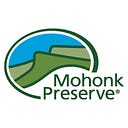The Uses of Adversity
The following article comes from a historic newsletter from The Mohonk Trust — № 28, Spring 1976.
Adversity doth best discover virtue.
- Francis Bacon
Amid the flood of Bicentennial news items was a recent interesting story about a search for “living links with the past.” A neighboring town set out to find trees that were at least 200 years old. They succeeded beyond expectation — to date their roster lists twenty “living links with the founding of our country back in 1776.”
The trees’ growing locations did not seem to be a crucial factor: “They’ve been found in backyards, along fence rows, and in dense woodlands. Sometimes even street trees manage to survive a full two centuries.” Size, however, was important: “Usually a tree must be at least ten feet in circumference to attain
Bicentennial status.”
Such are the marks of old trees. But as we at The Trust have learned over the
past two years, such are not the marks of very old trees.
Perhaps you’ve read about the exceedingly ancient and bizarrely beautiful bristlecone pine trees of the arid Southwestern mountains. Scientists from the University of Arizona have studied them and determined that ages of thousands of years are not unheard of. These are living trees, not fossil specimens!
Two summers ago a graduate student from Arizona was hiking on the Trust lands and noticed that some of our gnarled pines looked distinctly like the grizzled ancients he had studied in the Southwest. A research project was born then, as student Ed Cook set out to locate and age Mohonk’s oldest trees. His tool was a Swedish-made increment borer, which is a hollow tube with a cutting edge that extracts a pencil-size round of wood from the tree trunk — without harming the tree. Beyond that little is needed except sandpaper to smooth the sample, a microscope to count the rings, and much patience.
The first thing Ed taught us was that very old trees are not big trees. They grow slowly on difficult sites — rocky slabs with thin soil, or boulder slopes where it’s a long way down to water. They are magnified versions of the dwarf bonsai trees of Japan. The trunk need not be more than twelve inches in diameter, but hundreds of annual growth rings are packed into that tiny space. The old trees have a few stout branches, nearly as thick as the trunk. Often the tip of the tree is dead, but that needn’t be a sign of failing health. These trees take the long view of life; they can pull back into themselves like a turtle and sit out a decade or two of hard times. When favorable conditions return, they will grow more vigorously again, but always cautiously. A “big” tree on a “good” site, with rich soil and plenty of water, grows quickly…and dies quickly. The tree struggling against adversity lives on and on.
Ed Cook found that pitch pine, white pine, hemlock, and chestnut oak gave the oldest specimens. All four species had individuals going back into the 17th century, and the first three went back into the early years of that century. They will soon be celebrating their quadricentennial!
It is comforting to know that living things with us today were already well rooted when Henry Hudson sailed up the river that bears his name. As we look out over the preserved lands of our Shawangunks we can agree with Hudson’s officer of the boat, who wrote in his log that it is “a very good land…a pleasant land to see.” Many decades later our trees were already mature on that Thursday in July when Mr. Jefferson’s declaration was finally adopted. And a century or two from now they will still be there — if you and I guard them from the obvious follies of human vanity.
When you next walk our carriage roads, pick out these silent elders among us. Enjoy their beauty, and consider the lesson of their history.
